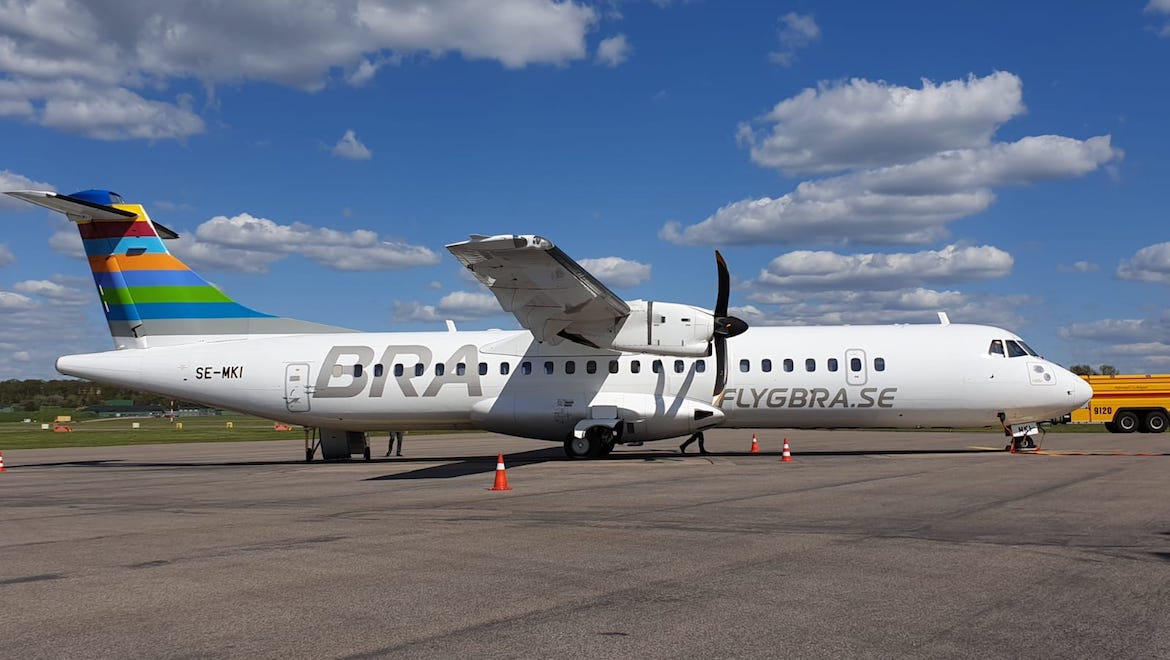
A group of businesses spanning the aviation sector has joined forces to produce what they call the “perfect flight”, producing the lowest possible greenhouse gas emissions.
The initiative has turned a run-of-the-mill weekday service, between Halmstad City Airport and Stockholm Bromma Airport, into a showcase for what’s possible for the aviation sector, as the world inches toward a sustainable future.
The inaugural, hour-long flight was made on May 16, 2019, and carried 72 passengers including a media contingent.
Braathens Regional Airlines (BRA) head of sustainability Anna Soltorp said the flight was a demonstration of what could be achieved through more efficient flying without compromising connectivity.
“As a society, we need to take action to combat climate change and drastically reduce emissions. Aviation must play its part in this,” Soltorp said.
The aircraft used in the “perfect flight” was the ATR 72-600 turboprop, powered by two Pratt & Whitney Canada PW127M engines chosen for its superior environmental credentials, including 40 per cent fewer carbon emissions compared with regional jets.
Soltorp said BRA wanted to continue to “fly perfectly” in the future.
“To achieve this, it is important that we can access sustainable aviation fuel in sufficient quantities and at the right price. For that we need political initiatives,” she said.
The flight used sustainable aviation fuel supplied by Air BP and produced by Neste.
Although the fuel was produced from non-palm renewable and sustainable raw materials it cannot yet boast 100 per cent carbon neutrality, thanks to the fossil fuels still being used in equipment use and manufacture, raw materials transport and production processes, as well as land use changes. Even so, sustainable fuel can still reduce emissions by up to 80 per cent over the fuel’s life cycle.
Neste vice president for renewable transportation in the Nordics Andreas Teir said he was proud of the partnership with Air BP, part of a proactive approach by industry stakeholders, which he said sent “a strong signal” to international aviation.
“Decarbonizing aviation calls for close cooperation between aviation stakeholders combined with a strong willingness to work collaboratively,” Teir said.
Air BP commercial development manager for low carbon Tom Parsons said the company committed to helping the industry to meet its collective carbon reduction goals and that the “perfect flight” showed what was possible.
“We will continue to look for ways to reduce emissions in our own operations and for our customers,” Parsons said.
ATR senior vice president for programs and customer services Tom Anderson said the flight had pushed the boundaries of sustainable flight, despite using only technology that was already commercially available.
“We are delighted to have taken up this challenge and demonstrate what is possible, which will hopefully set an example for other communities around the world,” Anderson said.










